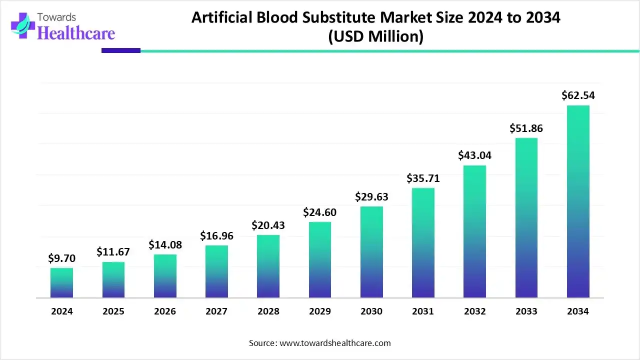The market is at a pivotal crossroads, where high-performance synthetic polymers still reign supreme. However, intense R&D in green chemistry is creating viable, bio-based alternatives that are rapidly closing the long-standing performance gap.
Chicago, Nov. 24, 2025 (GLOBE NEWSWIRE) — The global cosmetic polymer ingredients market was valued at US$ 8.4 billion in 2024 and is expected to reach US$ 13.3 billion by 2033, growing at a 5.2% CAGR during the 2025–2033 forecast period.
A decisive shift towards eco-conscious sourcing is redefining the cosmetic polymer ingredients market foundation. Industry momentum is accelerating, evidenced by the scheduled introduction of 15 new bio-based polymers in 2024. Major suppliers are actively diversifying their networks to include 50 new small-scale, sustainable raw material providers within the same year. Such strategic moves align with a massive financial commitment, as at least 10 major chemical companies plan to invest over US$ 50 million collectively in green chemistry R&D during 2025. These investments are crucial for meeting the rising demand for environmentally benign inputs.
Request Sample Pages: https://www.astuteanalytica.com/request-sample/cosmetic-polymer-ingredients-market
Operational sustainability is simultaneously yielding tangible environmental benefits. Advanced polymerization techniques adopted in 2024 are projected to save 200,000 gallons of water annually for major suppliers. Furthermore, industry leaders in the cosmetic polymer ingredients market have set a collective target to eliminate 3,000 metric tons of production waste by 2025. Certification momentum is also strong, with ECOCERT or COSMOS accreditations expected to increase by 40 in 2024. By 2025, the market anticipates 25 new cosmetic polymers will meet the stringent OECD 301 standard for ready biodegradability.
Key Findings in Cosmetic Polymer Ingredients Market
| Market Forecast (2033) | US$ 13.3 Billion |
| CAGR | 5.2% |
| Largest Region (2024) | Asia Pacific (44.43%) |
| By Product Type | Acrylic Polymers (32.22%) |
| By Functionality | Thickeners (28.11%) |
| By Application | Skincare Products (41%) |
| By Source | Synthetic (68.53%) |
| Top Drivers |
|
| Top Trends |
|
| Top Challenges |
|
Technological Manufacturing Advancements Drive Efficiency And Higher Production Yields Globally
Manufacturing excellence is becoming a primary competitive advantage within the cosmetic polymer ingredients market. In 2024, approximately 15 large-scale chemical plants will integrate AI-powered predictive maintenance systems to optimize uptime. These technological upgrades are paired with significant energy advancements. New protocols are expected to reduce the energy required to produce one metric ton of hyaluronic acid by 500 kWh in 2025. Automation is also reaching new heights, with projections indicating that 80% of top-tier supplier production lines will be fully automated by the end of 2024.
Efficiency gains are directly translating into improved output and speed in the cosmetic polymer ingredients market. The adoption of continuous flow manufacturing is set to reduce production time for specific silicone elastomers by 18 hours in 2025. Concurrently, process optimization is expected to boost the production yield of xanthan gum by an average of 3% across major producers in 2024. To accommodate growing volumes, three new manufacturing facilities with a combined capacity of 10,000 metric tons are scheduled to open in Asia by 2025. Quality assurance is also improving, as real-time spectroscopic analysis aims to reduce batch-to-batch variability by a factor of 2 in 2024.
Aggressive Research And Development Initiatives Are Fueling Next Generation Polymer Discovery
Innovation pipelines are robust and expanding rapidly across the cosmetic polymer ingredients market. Intellectual property activity is high, with over 200 new patents related to cosmetic polymers expected to be filed globally in 2024. Financial backing for specialized research is increasing, as suppliers project an additional US$ 30 million in R&D spending on sensory-modifying polymers in 2025. Collaboration is a key accelerator. At least 25 new research partnerships between chemical companies and universities focusing on biodegradable polymers are anticipated to be established in 2024.
Speed and specificity are defining the new era of discovery. High-throughput screening methods will enable leading companies to test 1,000 new polymer candidates weekly in 2024. Trends towards health-conscious beauty are driving the launch of at least 15 new “microbiome-friendly” polymers by 2025. Novel applications are also emerging, with 5 major R&D centers actively developing polymers for 3D printing applications in 2024. To validate these innovations, the number of clinical trials substantiating anti-aging polymer claims is expected to double in 2025 compared to 2023.
Multifunctional Product Formulations Are Creating Demand For Versatile Polymer Ingredients
Formulators are increasingly seeking efficiency and performance, driving specific demands in the cosmetic polymer ingredients market. In 2024, the industry will welcome 30 new cosmetic polymers offering at least three distinct functional benefits. Consumer trends are shaping these launches. The number of new “serum-in-foundation” products featuring film-forming polymers is projected to exceed 50 in 2025. Energy-conscious formulation is also a priority. Formulators are expected to adopt 40 new types of cold-processable emulsifying polymers in 2024 to reduce manufacturing energy consumption.
Innovative formats continue to disrupt traditional categories. At least 60 new solid format cosmetic products will utilize novel binding polymers in 2025. Suppliers are enabling this creativity by offering 10 new polymer systems in 2024 that allow for the creation of over 100 different textures. The demand for natural solutions is being met with the availability of 75 pre-formulated blends of natural and synthetic polymers by the end of 2025. Niche segments are also growing, with specific cationic polymers expected to feature in over 100 new targeted scalp treatments in 2024.
Strategic Distribution Networks Ensure Global Access and Reliability For Stakeholders in Cosmetic Polymer Ingredients Market
Supply chain resilience is critical for maintaining growth in the market. Key suppliers are expanding their reach, with over 50 new distribution agreements expected in emerging markets in 2024. Transparency is being revolutionized through technology. By 2025, at least 5 major polymer suppliers will implement blockchain technology to ensure raw material traceability. Logistics improvements are also targeting speed. Strategic warehousing aims to reduce the average lead time for key polymers to the European market by 7 days in 2024.
Infrastructure investments are bolstering regional support for the cosmetic polymer ingredients market. The number of dedicated warehouses for cosmetic polymers in Southeast Asia is projected to increase by 10 in 2025. Digitalization is streamlining operations, with over 90% of the top 20 suppliers offering fully digitalized ordering platforms by 2024. These platforms are expected to facilitate 5,000 more direct sales transactions between manufacturers and small brands in 2025. To mitigate future risks, at least 15 major chemical companies will conduct comprehensive supply chain resilience audits in 2024.
Strict Regulatory Compliance Frameworks are Shaping Ingredient Innovation And Safety
Regulatory adherence is a major driver of change within the cosmetic polymer ingredients market. In 2024, an estimated 20 new cosmetic polymers will undergo the full REACH registration process in the European Union. Accessing the Chinese market remains a priority. Suppliers are expected to submit over 300 safety and efficacy dossiers for polymers to comply with China’s CSAR by 2025. Environmental restrictions are tightening. The number of cosmetic polymers classified as microplastics and facing restrictions is expected to increase by 15 in the EU in 2024.
Safety investments are rising to meet these challenges. The industry projects spending an additional US$ 25 million in 2025 on advanced in-vitro toxicological testing. Cultural and ethical compliance is also gaining traction. The number of Halal-certified polymer ingredients is anticipated to grow by 50 in 2024. Similarly, manufacturers are expected to issue over 1,000 new vegan compliance statements by 2025. Retailer standards are also influential. Suppliers are reformulating at least 40 existing polymers in 2024 to meet the restricted substance lists of major “clean beauty” retailers.
Fierce Competitive Rivalry Drives Innovation Within The Hair Fixative Segment
The hair fixative sector represents a highly competitive niche within the cosmetic polymer ingredients market. One leading supplier plans to launch 5 new acrylates copolymers for styling applications in 2024. Production capabilities are expanding to meet demand. A major European manufacturer has announced a 5,000 metric ton expansion of PVP production capacity, set for completion by 2025. Partnerships are fueling advancement. In 2024, at least 3 major suppliers will announce alliances with biotechnology firms to develop novel bio-fermented fixatives.
Market players in the cosmetic polymer ingredients market are aggressively vying for formulator attention. R&D teams at 4 competing companies are aiming to screen over 2,000 polymer variations for improved humidity resistance in 2025. Education is a key tactic. A top-tier supplier has committed to hosting 20 educational webinars for formulators in 2024. Sampling campaigns are massive. The top 5 suppliers are projected to distribute over 100,000 samples of new fixative polymers globally in 2025. Consolidation is also evident, with a leading chemical company rumored to be acquiring a startup with novel cross-linking technology for US$ 75 million in 2024.
Geographic Market Dynamics Create New Opportunities in Emerging and Established Regions
Regional developments are reshaping the global cosmetic polymer ingredients market. India is strengthening its industrial base, with 8 new manufacturing units for basic polymers expected by 2025. South Korea remains a hub for innovation. The country is set to host 12 new specialized R&D centers for K-beauty formulations by the end of 2024. Europe maintains its export dominance. Germany is projected to export over 50,000 metric tons of high-performance cosmetic polymers in 2025. Logistics are improving in Latin America, with 3 new distribution hubs establishing in Brazil in 2024.
Specific regional climate needs are driving import behaviors. Australia is expected to import an additional 2,000 metric tons of polymers for high-SPF sunscreens in 2025. Trade facilitation is progressing in Asia. The 10 ASEAN member states are working to harmonize regulations for 100 common cosmetic polymers by late 2024. Commercial footprints are expanding into new territories. At least 4 major ingredient suppliers have announced plans to open their first sales offices in key African markets like Nigeria and South Africa in 2025.
Tailor This Report to Your Specific Business Needs: https://www.astuteanalytica.com/ask-for-customization/cosmetic-polymer-ingredients-market
Digital Tools And Evolving Formulator Preferences Are Revolutionizing Market Interactions
Digitalization and changing B2B behaviors are converging to alter the cosmetic polymer ingredients market. By 2025, over 200 cosmetic companies will utilize AI-powered software for formulation predictions. Such tools are accelerating development. Predictive modeling is expected to reduce initial stability testing time by 3 weeks in 2025. Digital engagement is soaring. In 2024, online collaboration platforms will manage over 1,000 R&D projects. Suppliers are responding with advanced tools. Top companies will deploy virtual reality for sensory evaluation in 2024 and launch 15 comprehensive online product finders. E-learning is also growing, with 50 polymer-focused courses expected by 2025.
Formulator preferences are driving these digital shifts across the cosmetic polymer ingredients market. In 2024, suppliers expect 10,000 requests for pre-formulated solutions. A survey indicates 85% of chemists prioritize multifunctional polymers. Consequently, a single new polymer generated 3,000 sample requests in early 2024. Search data reflects these interests. Platforms report a 40% increase in searches for “natural film-forming polymers.” By 2025, bio-based inquiries will account for 4 out of every 10 requests. Demands for transparency are rising. Requests for clinical efficacy data are set to rise by 30% in 2025. Data science is becoming central. At least 7 major companies will have dedicated teams analyzing 1 terabyte of consumer data monthly by 2025.
Cosmetic Polymer Ingredients Market Major Players:
- Ashland Inc
- SNF
- Cargill Incorporated
- The Dow Chemical Co
- BASF SE
- Evonik Industries AG
- Clariant AG
- Solvay SA
- Arkema SA
- Nouryon Chemicals Holding BV
- Sensient Technologies Corp
- The Lubrizol Corporation
- SOPHIM IBERIA S.L.
- Derypol
- 3V Sigma S.p.A.
- Other Prominent Players
Market Segmentation:
By Product Type
- Acrylic Polymers
- Polyurethane Polymers
- Silicone Polymers
- Natural Polymers
- Polyester Polymers
- Polyvinyl Alcohol (PVA) Polymers
- Epoxy Polymers
- Polyethylene Glycol (PEG) Polymers
By Application
- Skincare
- Hair Care
- Color Cosmetics
- Fragrance
- Nail Care
- Oral Care
By Functionality
- Film Formers
- Thickeners
- Emulsifiers
- Stabilizers
- Conditioners
- Surfactants
- Anti-aging Agents
- UV Filters
By Source
- Synthetic
- Natural
By Region
- North America
- Europe
- Asia Pacific
- Middle East and Africa
- South America
Not Sure Where to Start? Let Our Analyst Walk You Through the Report: https://www.astuteanalytica.com/report-walkthrough/cosmetic-polymer-ingredients-market
About Astute Analytica
Astute Analytica is a global market research and advisory firm providing data-driven insights across industries such as technology, healthcare, chemicals, semiconductors, FMCG, and more. We publish multiple reports daily, equipping businesses with the intelligence they need to navigate market trends, emerging opportunities, competitive landscapes, and technological advancements.
With a team of experienced business analysts, economists, and industry experts, we deliver accurate, in-depth, and actionable research tailored to meet the strategic needs of our clients. At Astute Analytica, our clients come first, and we are committed to delivering cost-effective, high-value research solutions that drive success in an evolving marketplace.
Contact Us:
Astute Analytica
Phone: +1-888 429 6757 (US Toll Free); +91-0120- 4483891 (Rest of the World)
For Sales Enquiries: sales@astuteanalytica.com
Website: https://www.astuteanalytica.com/
Follow us on: LinkedIn | Twitter | YouTube
CONTACT: Contact Us: Astute Analytica Phone: +1-888 429 6757 (US Toll Free); +91-0120- 4483891 (Rest of the World) For Sales Enquiries: sales@astuteanalytica.com Website: https://www.astuteanalytica.com/

Disclaimer: The above press release comes to you under an arrangement with GlobeNewswire. IndiaShorts takes no editorial responsibility for the same.



